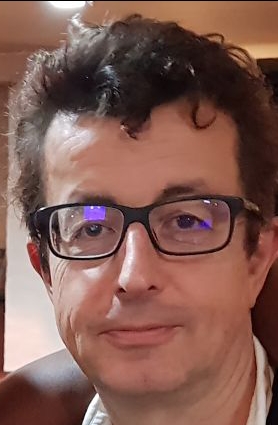![Looking west along the North London Line from the eastbound platform at Brondesbury By mattbuck (category) (Own work by mattbuck.) [CC BY-SA 2.0 (https://creativecommons.org/licenses/by-sa/2.0), CC BY-SA 3.0 (https://creativecommons.org/licenses/by-sa/3.0) or CC BY-SA 4.0 (https://creativecommons.org/licenses/by-sa/4.0)], via Wikimedia Commons Looking west along the North London Line from the eastbound platform at Brondesbury By mattbuck (category) (Own work by mattbuck.) [CC BY-SA 2.0 (https://creativecommons.org/licenses/by-sa/2.0), CC BY-SA 3.0 (https://creativecommons.org/licenses/by-sa/3.0) or CC BY-SA 4.0 (https://creativecommons.org/licenses/by-sa/4.0)], via Wikimedia Commons](https://iale.uk/sites/default/files/styles/large/public/images/articles/brondesburyrailwaystationmmb07.jpg?itok=QfgVKAde)
Question 1: What is your current job title and who is your employer?
Working for Transport for London, I am currently the Head of Environment and Sustainability at Crossrail 2, a multibillion pound new rail scheme connecting existing railways north and south of London.
Question 2: What is your typical working day/week?
Major projects, especially of the scale and cost of Crossrail 2, can follow a rather rocky path, so days vary according to the stage of the project over what can be a long and slow consenting process. We are currently seeking to modernise the way that EIAs are undertaken and reported, so much time is devoted by my team and I to developing the EIA website. I am also promoting a number of sustainable design initiatives on the project, which requires close working with several disciplines and skills and promoting innovation across a range of topics.
Question 3: What jobs and experience have led you to your present position?
With a Masters in Landscape Ecology, Design and Management from Wye, I joined ERM as part of their landscape assessment team in 1990. My experience grew from this to encompass general EIA management. I developed wider experience in auditing and management systems, before setting up my own business in 1999. Since then, I have mostly returned to my roots in EIA, particularly working on large infrastructure projects.
Question 4: For young professionals - what skills do you think are most important in environmental consultancy?
It depends what field, but for me communication is key, be that through spoken or written word or use of computer aided systems and tools. I believe we need to become far more innovative in the ways we communicate nowadays and have become frustrated by how our profession lags so far behind many others in not thinking enough about the product. Being clever and technically gifted is great, but we need to convey simple messages to effect change, no matter who the audience is. And especially nowadays, where social media requires an instant message. But simplifying without dumbing down is difficult to achieve. For me, an ability to see outside the detail is key, and a masters that literally taught us to see the wood for the trees has helped greatly in this respect.
Question 5: Previously you were the lead in developing the method for appraising the sustainability performance of options for HS2 - can you explain a little bit about the method used?
Before Crossrail 2, I was closely involved in the early planning phases of HS2. I think this is one of the most exciting times on a project, where one can really influence the outcome and help contribute to some pretty big decisions. The appraisal of sustainability describes the process through which, over many years of work, environmental and sustainability considerations helped determine the routes and alignments that are now being promoted (and built). By the time I worked on Phase 2 (the sections to Manchester and Leeds) we had honed our approach, which included automated appraisal using GIS of the 20,000 miles of different route options. I redeveloped an option appraisal technique called pairwise comparison for use in the later stages for more defined designs, which allows for an equitable comparison taking account of diverse considerations. We developed it for environmental purposes, but it was valued by the project as a whole. As a result, I successfully promoted its wider use on Crossrail 2.
Nick can be contacted at: nick@giesler.org.uk
More information on Cross Rail 2 including route map (see link to website)
Interested in the Wye legacy? Read Chris Baines article in The Wye influence
